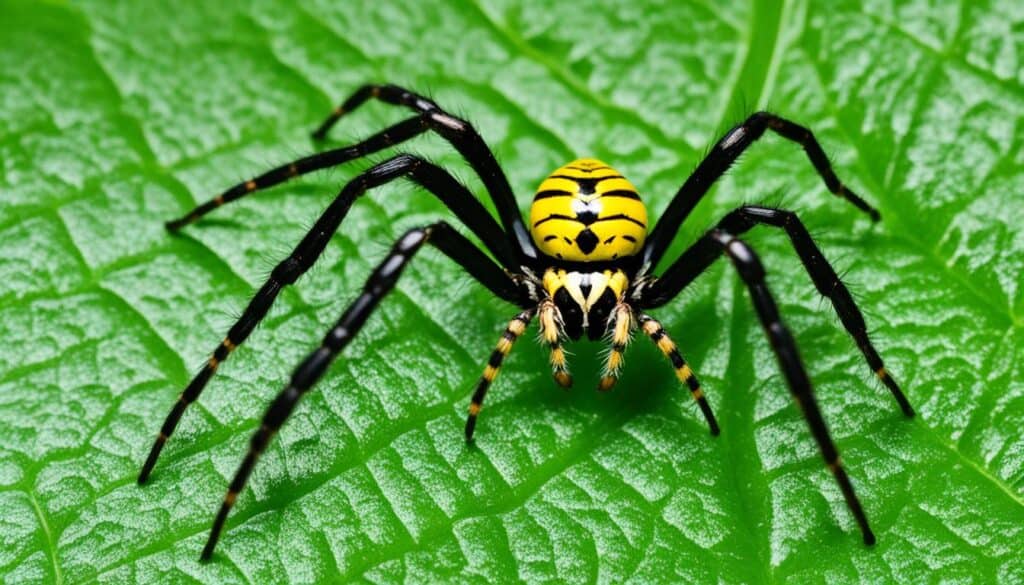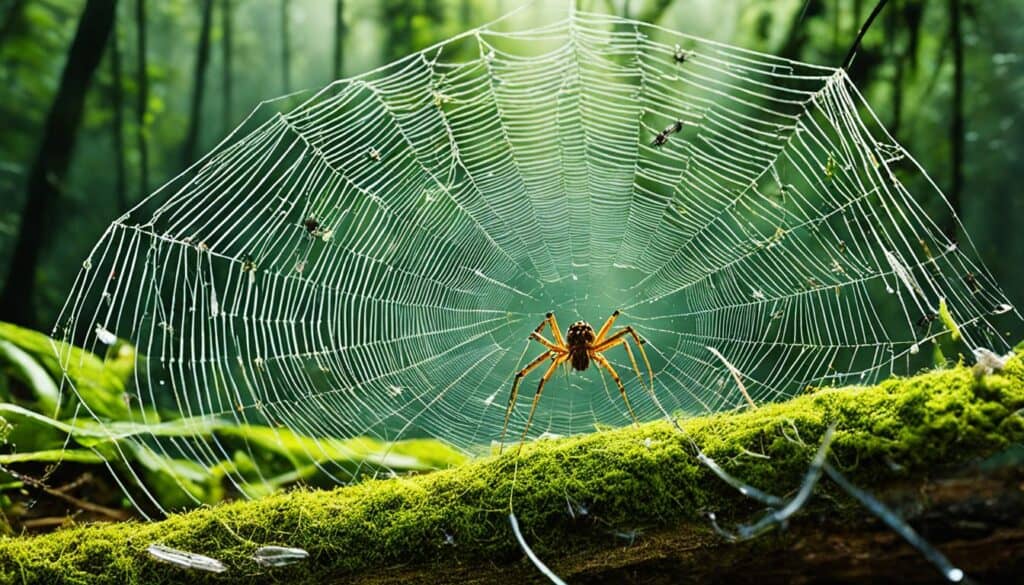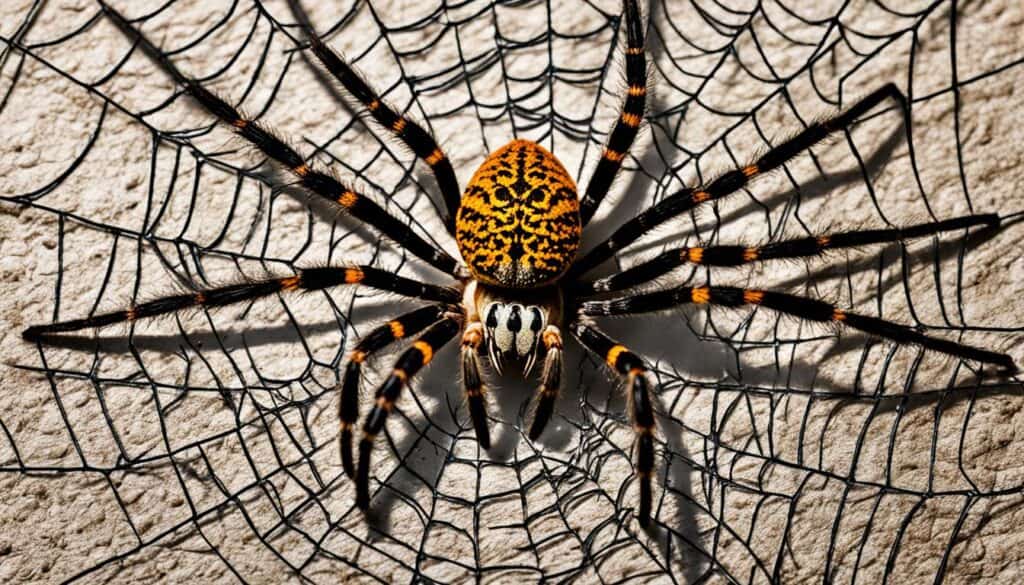Have you heard about a palm-sized spider making waves on the East Coast? Named the Joro spider, these creatures hail from East Asia. They can stretch up to four inches long. Recently, their numbers have boomed in Atlanta and have spread to the Carolinas, southeastern Tennessee, and even Baltimore.
These spiders might look scary, but they’re not the monsters they seem to be. Their venom’s effect is similar to a bee sting – bothersome but not lethal. Biologist David Nelsen tells us we should worry more about their effect on ecosystems rather than harm to people.
Joro spiders, as invasive species, have a significant environmental impact. This stems from global trade and climate change. Their talent for “ballooning” lets them quickly move and take over new areas. This could threaten local species and upset natural balances. An eight-legged surprise may spook you, but the real concern is the environment.
Key Takeaways
- Joro spiders can be as large as the palm of a human hand.
- Originally from East Asia, they have rapidly expanded across the U.S. East Coast.
- Despite their alarming presence, their bites are no more harmful than bee stings.
- The biggest concern is their impact on local ecosystems, not human health.
- Joro spiders’ expansion is aided by global trade and warming climates.
- Biologists emphasize awareness of ecological damage over panic about spider sightings.
Overview of Joro Spiders
Let’s explore the world of Joro spiders. Imagine large, colorful spiders with vivid yellow and black bodies. They belong to the East Asian orb-weavers, famous for their impressive circle-shaped webs. Yet, these attention-grabbing spiders know how to stay under the radar when they’re young. At that stage, they’re tiny, as small as a rice grain.
In the Southeast U.S., especially around Atlanta, their golden webs are easy to find. They’ve settled into the Carolinas, southeastern Tennessee, and reached Baltimore. Their spread ties closely to climate conditions and their own persistence. Young Joros practice “ballooning,” using silk threads to glide on the wind. It’s their way of traveling, like a real-life Spider-Man.
Although they look fancy, their bites are barely a bother, similar to bee stings. These spiders pose no threat to humans but are insect predators. Their webs help control pests, which may benefit local birds and change the ecosystem. Yet, it’s important to monitor their expansion to protect native spiders. Researchers are watching to see where these intrepid spiders end up next.
As Joro spider sightings grow, we might learn to appreciate them more. Next time you’re outside, look up. You might see a Joro spider gliding by, playing a unique role in our environment.
Joro Spider and Human Interaction
Since their first appearance in the U.S. in 2013, millions of Joro spiders have sparked fear and fascination. As a New Jersey resident, I’ve seen these huge, colorful spiders myself. However, it’s time to ease our fears. When it comes to interacting with humans, Joro spiders are not a threat but often misunderstood.
Picture this: You’re gardening and suddenly see a large, yellow and black spider. You might want to scream and run. But really, there’s no need to panic. Joro spiders don’t see humans as enemies or food. Instead, they eat flying insects, acting as natural pest controllers in your garden.
Concerned about their bite? It’s less painful than a bee sting and doesn’t need medical care. It’s a slight nuisance, really. The size of these spiders can be startling. But they’re not aggressive towards humans. In studies, they freeze when scared, showing they’d rather avoid conflict.
Joro spiders can endure cold weather, which is why they’re spreading north. They’ve moved beyond Atlanta, reaching the Carolinas and Tennessee. Pesticides don’t really affect them. To keep safe, continue to report sightings of these spiders. Doing so helps scientists track their movements and study their environmental impact.
Impact on Ecosystem and Environment
Here’s the scoop on Joro spiders shaking up their new home in the U.S. They come from East Asia and landed here about 8 to 9 years ago. And have they made a mark! The University of Georgia has noticed fewer local spiders. This is called ecosystem impact.
But don’t rush to use pesticide. It is bad for the native spiders. It just makes things worse. Plus, Joro spiders might help by eating pests like stink bugs and mosquitoes. That’s environmental adaptation in action!
There’s also a citizen science project for tracking Joro spiders. Volunteers count them to see if they’re pushing out local spiders. It’s a unique way to face your fear of spiders!
These spiders started spinning huge webs in Georgia in 2021. Since first seen in Atlanta in 2014, they’ve multiplied fast. Controlling invasive species like these costs the U.S. about $21 billion a year. The challenge of invasive species control is real!
Introducing a species like the Joro spider disrupts nature’s balance. Their spread affects biodiversity changes and native species competition. It brings new struggles for survival among local animals.
Environmental DNA and global pest surveillance are tools used to study these spiders. Understanding their effects helps us see the big environmental picture.
Public Health Concerns
Here’s some good news: the Joro spider might look scary, but it’s not a big health threat. Even though it’s venomous, its bite is minor. It might sting like a bee sting, but there’s no need to freak out.
But what if you’re allergic? That’s a legitimate concern. Yet, no severe allergic reactions to Joro bites have been reported. Chances are, finding one might just make you famous on TikTok rather than hurt you.
When it comes to these spiders, no extreme measures are needed. Just remove their webs gently and keep them away from your space. This approach helps our urban wildlife without overkill.
Seeing these colorful spiders can be unsettling. Just remember, they help more than they harm by eating other pests. A careful approach is best with them!
Conclusion
The spread of Joro spiders in the U.S. is a big deal. It’s not just about our fear of spiders. Their spread covers over 120,000 square kilometers in the south and along the East Coast. This shows how humans and nature interact in complex ways. Spiders move quickly using their silk to fly, leading to heated discussions about our environment.
Joro spiders may push out local bugs, but they’re not a big danger to people. Their bite is like a bee sting, which is bad only for those with allergies. Still, we can’t ignore them. It’s important to keep studying them and work together to limit their effects on nature.
Here’s the main point: learning about Joro spiders helps us live with them without harm. We should avoid harmful chemicals and find safer ways to deal with them, like removing webs. This issue reminds us to engage in wider environmental talks. Knowing how to handle these spiders is key for the health of the East Coast’s nature and beyond.
For more details, read the research by David Nelsen and his team at Southern Adventist University here.




